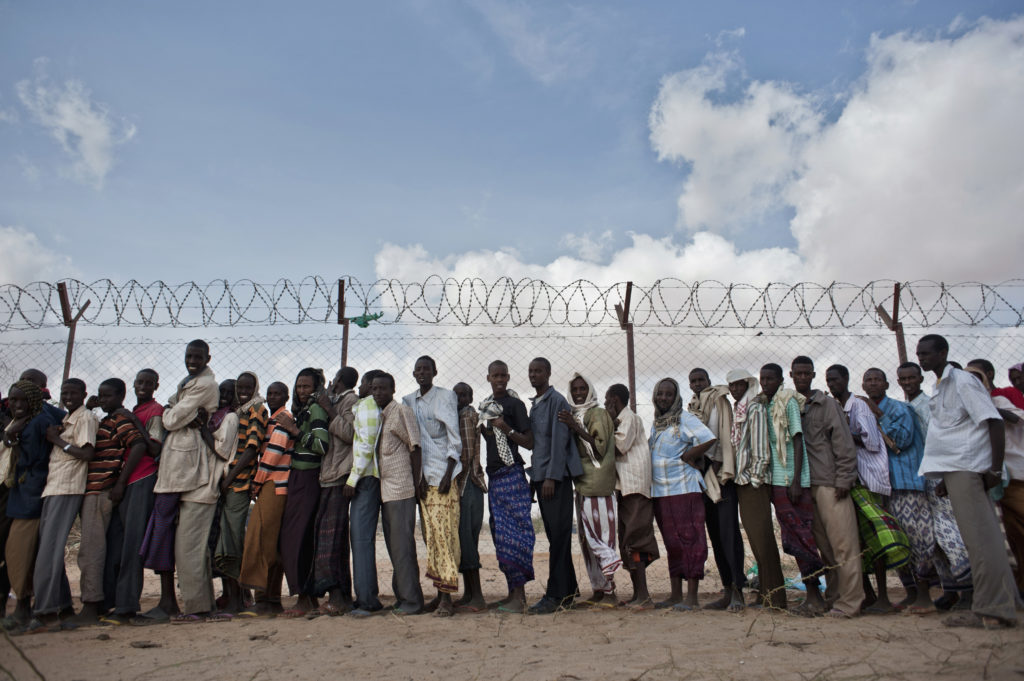 The idea came to me in September 2016 when the United Nations General Assembly held a high level summit to address the large movements of refugees and migrants. At the meeting it was increasingly clear that the world is experiencing a huge humanitarian and health crisis affecting migrants, refugees, and internally displaced patients (MRIDP). In fact, this phenomenon has been going on for so long that it has almost become permanent.
The idea came to me in September 2016 when the United Nations General Assembly held a high level summit to address the large movements of refugees and migrants. At the meeting it was increasingly clear that the world is experiencing a huge humanitarian and health crisis affecting migrants, refugees, and internally displaced patients (MRIDP). In fact, this phenomenon has been going on for so long that it has almost become permanent.
The World Health Organization (WHO) and its Global Health Observatory and the UN High Commission for Refugees (UNHCR) have accumulated so much data over the past 20 years on the health needs of MRIDPs that some now think it justifies establishing a new specialism to address the health needs of MRIDPs in specialist settings. We need migrant and refugee medicine. The history of medicine shows that over time new medical disciplines or specialties evolve out of general medicine. This development advances patient centricity in healthcare as it addresses the specific needs of a particular group of patients in a more personalised approach.
So what justifies the need for a new specialism of medicine to cover the needs of MRIDPs?
The number of patients affected now forms a clear group with a unique health problem. The UNHCR estimates that over 65 million people are displaced and in some regions they make up a large part of the population. Other specialties evolved because they cater to a large and specific part of the population: for example, geriatric care is needed to respond to the rapidly ageing population in developed countries. We now have a large permanent group of MRIDPs on the move or stranded at borders. Permanent refugee camps have emerged on nearly every continent. The Dadaab Camp, for example, which is on the border between Kenya and Somalia, even functions in some ways as its own city and the latest estimates put the camp’s population at 244 459.

The need for new treatment protocols and seamless care pathways. The disrupted treatment of patients on the move requires new health system arrangements to provide continuity of care. Common chronic conditions take on a new shape when you are a MRIDP. At a side event at the 2017 World Health Assembly (“Displaced people with chronic conditions—How to tackle the pandemic on the move”), experts stressed the prevalence of polymorbidity among MRIDPs, which calls for new interventions and guidelines to help professionals and new pathways that will ensure MRIDPs’ access to care and medication. Patients with type 1 diabetes, for example, need cold chains for the transport of insulin and depots along every route where they can access this medication.
The report Medication without Harm: WHO’s Third Global Patient Safety Challenge talks of the risk of medication errors occurring in peaceful and stable settings during transitions between different services. Imagine then what must be the much greater risk of medication errors occurring when patients are moving across borders, and as the training of health professionals and the medicines they use (dose strengths, names etc) change.
The need for health workers with particular skill sets. This kind of patient population needs health workers who are linguistically competent and culturally open minded. These health workers not only need training to develop specialised clinical competencies, but also the social and communication skills to deal with the psychosocial welfare of this patient group. This training could be facilitated through having specialist colleges and programmes, as well as on the job training that takes place in refugee camps and along migration routes.
Specialist training could develop a health workforce with the capacity to deal with the acute physical and psychosocial health needs of victims of torture, rape, and mass trauma injuries, who are often on the move and living in deprivation. Of course, there are many charities and other organisations that are providing this care already, but having healthcare workers who have been taught and prepared for providing care under these circumstances can only be to the benefit of patients and professionals.
Health workers’ occupational health and welfare. It’s worth remembering that health workers on the frontlines will also be affected by what they’re witnessing and will require specialist occupational healthcare and welfare arrangements. The people treating this population need to be resilient and adaptive enough to make do and mend at times when they may not have all the resources they would wish for.
There are already international human rights standards and conventions in place to protect the rights of migrant and refugee patients, including their right to health. However, refugees are particularly vulnerable to being overlooked and prevented from enjoying these rights. Migrants, refugees, and internally displaced patients need their own specialism to ensure that they are receiving the best care, that they have healthcare workers who are able to advocate for them and care pathways that are tailored to them, and so that professionals themselves are properly supported.
After WHO Europe held a summer school on refugee and migrant health last week in Syracuse, Italy, this idea may not be too far away from being realised.
Kawaldip Sehmi is CEO of the International Alliance of Patients’ Organizations.
Competing interests: None declared.